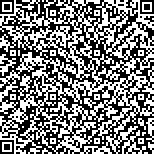|
| 引用本文: | 陈龙,陈宏斌,李朋,胡朋,何兆益.高掺RAP沥青界面融合行为的量化评价[J].建筑材料学报,2021,24(4):811-819 |
| |
|
| |
|
|
| 本文已被:浏览 298次 下载 86次 |

码上扫一扫! |
|
|
| 高掺RAP沥青界面融合行为的量化评价 |
|
陈龙1, 陈宏斌2, 李朋1, 胡朋1, 何兆益3
|
|
1.山东交通学院交通土建工程学院,山东济南250357;2.甘肃省交通科学研究院集团有限公司,甘肃兰州730030;3.重庆交通大学土木工程学院,重庆400074
|
|
| 摘要: |
| 采用荧光显微镜(FM)和动态剪切流变仪(DSR),对多因素组合下高掺废旧沥青路面材料(RAP)沥青界面融合行为进行量化评价.结果表明:荧光图像可辨别RAP沥青与新添沥青界面融合行为的发生,随新添沥青掺量(ω)增加,平均光密度(AOD)、累计光密度(IOD)、图像灰度值(IGL)均线性增大;随加热温度和新添沥青标号提高,界面融合速率(DS)、融合程度(DOB)和界面扩散激活能(Q)均显著增加,各层位处新添沥青掺量(w)趋于均匀一致,分布离散系数(DDC)逐渐减小;随加热时间延长,DS和DDC快速衰减,其余各量化指标增大并趋于稳定,表明改善沥青界面融合效应的关键在加热初期阶段.当粉胶比较小(0、10)时,加热温度每增长20℃,DS相对提升50%~120%;提高沥青标号或添加再生剂可分别提升DS值2、10倍左右,降低DS衰减幅度10%~50%;添加再生剂能够提升DOB值2~3倍,其改善沥青界面融合的效果尤为明显. |
| 关键词: 废旧沥青路面材料 界面融合行为 量化评价 光密度 融合程度 |
| DOI:103969/j.issn.1007 9629202104019 |
| 分类号: |
| 基金项目:“十三五”国家重点研发计划项目(2018YFB1600100);国家自然科学基金资助项目(51978116);山东省自然科学基金资助项目(ZR2017LEE026,ZR2020QE274);山东交通学院博士科研启动基金项目(50004945,50004946) |
|
| Quantitative Evaluation on Interfacial Diffusion Behavior of Asphalt with High Percentage of RAP |
|
CHEN Long1, CHEN Hongbin2, LI Peng1, HU Peng1, HE Zhaoyi3
|
|
1.School of Transportation Civil Engineering, Shandong Jiaotong University, Jinan 250357, China;2.Gansu Provincial Transportation Research Institute Group Co., Ltd., Lanzhou 730030, China;3.College of Civil Engineering, Chongqing Jiaotong University, Chongqing 400074, China
|
| Abstract: |
| The diffusion behaviors on asphalt interface of high percentage recycled asphalt pavement(RAP) under multi factor coupling conditions were quantitatively characterized using fluorescence microscopy(FM) and dynamic shear rheometer(DSR). The results show that the fluorescence images can identify the diffusion action between RAP asphalt and virgin asphalt, and the quantitative evaluation indexes of interaction average optical density(AOD), integral optical density(IOD) and image gray level(IGL) increase linearly with the rise of virgin asphalt content(w). Additionally, with the rise of heating temperature and asphalt grade, the quantitative evaluation indexes i.e. the diffusion speed(DS), the degree of blending(DOB) and energy quantity(Q) increase significantly, and the distribution of virgin asphalt content(w) in each layers reaching unanimity, leading to decrease of the discrete distribution coefficient(DDC). Moreover, the DS and DDC closely decrease exponentially with the extension of heating time, and the other indexes increase and tend to be stable finally, which show that the key to improve the diffusion action is in the early stage. Specifically, when the filler asphalt ratio is small, every 20℃ growth in heating temperature is accompanied by 50%120% increase in DS value, and the values of DS can be increased by 2,10 times respectively with the rise of virgin asphalt grade and regenerant content, while the attenuation range of DS can be decreased by 10%50%. The value of DOB can be increased by 23 times when regencration agent is added, and the effects of improvement of diffusion action are particularly obvious. |
| Key words: reclaimed asphalt pavement materials interfacial diffusion behavior quantitation evaluation optical density degree of blending |
|
|
|
系统正在查找本文的参考文献,请稍候...
|
|
系统正在查找本文的被引信息,请稍候...
|
|
系统正在获取相似文献,请稍候...
|
|
|